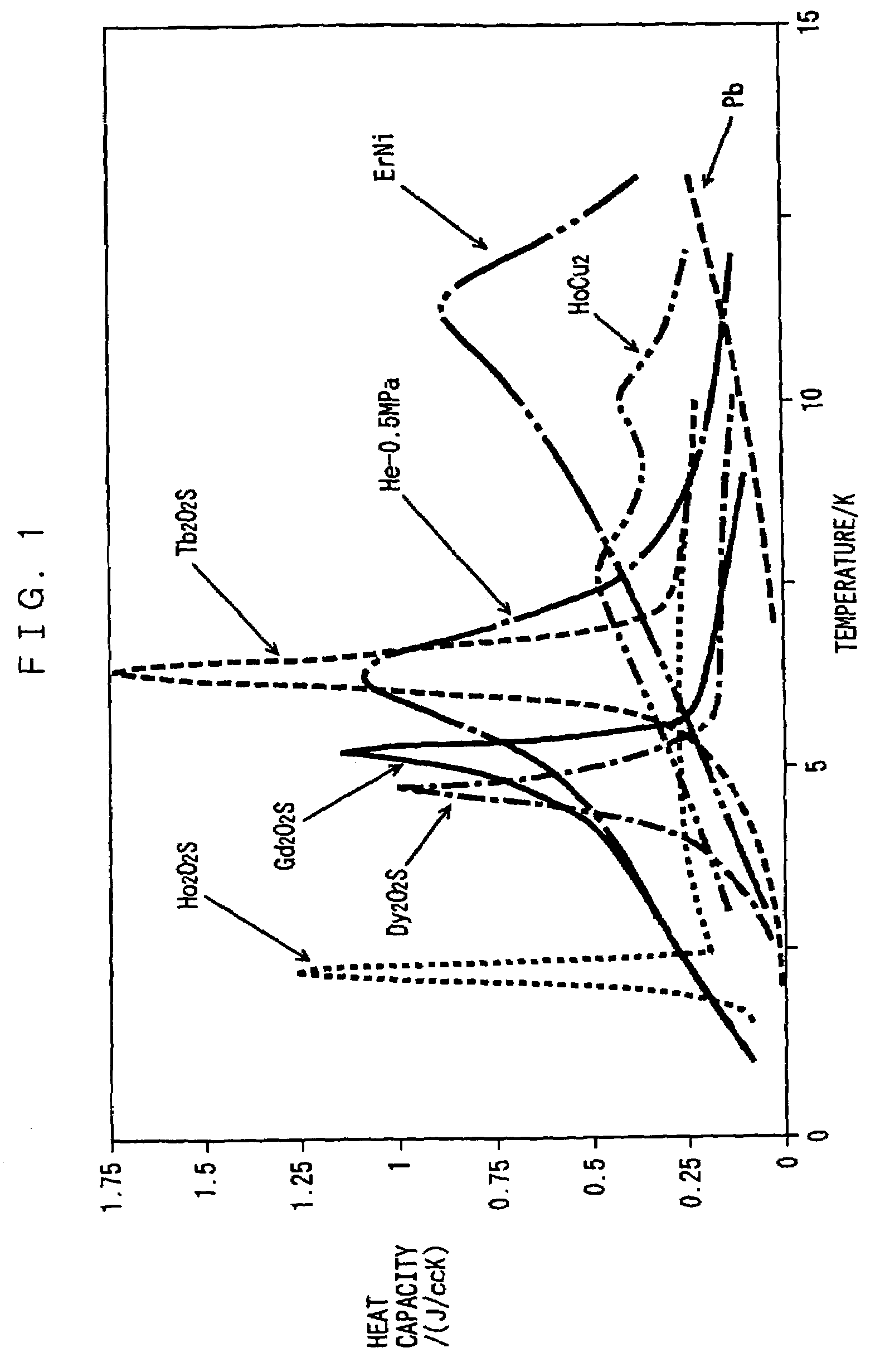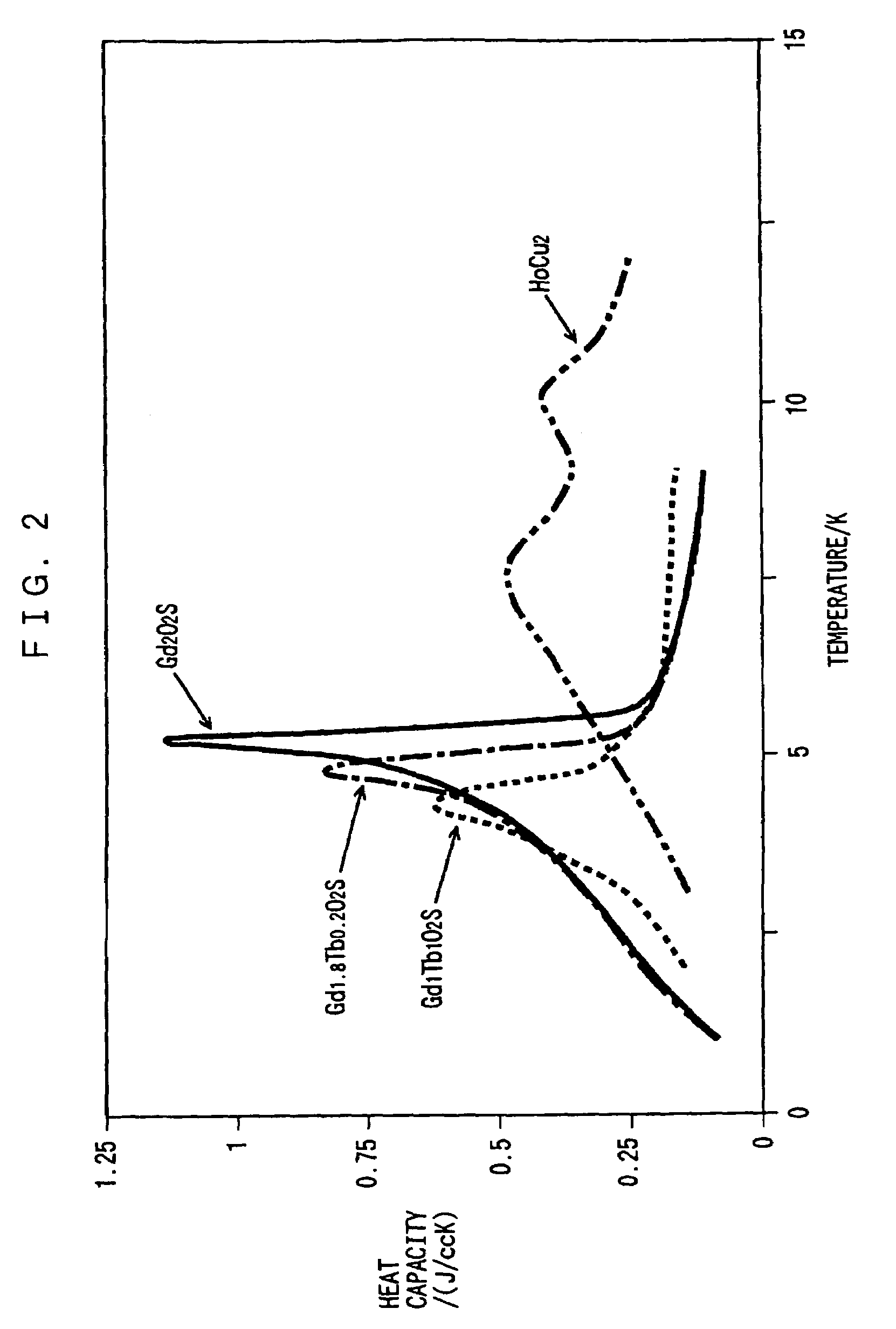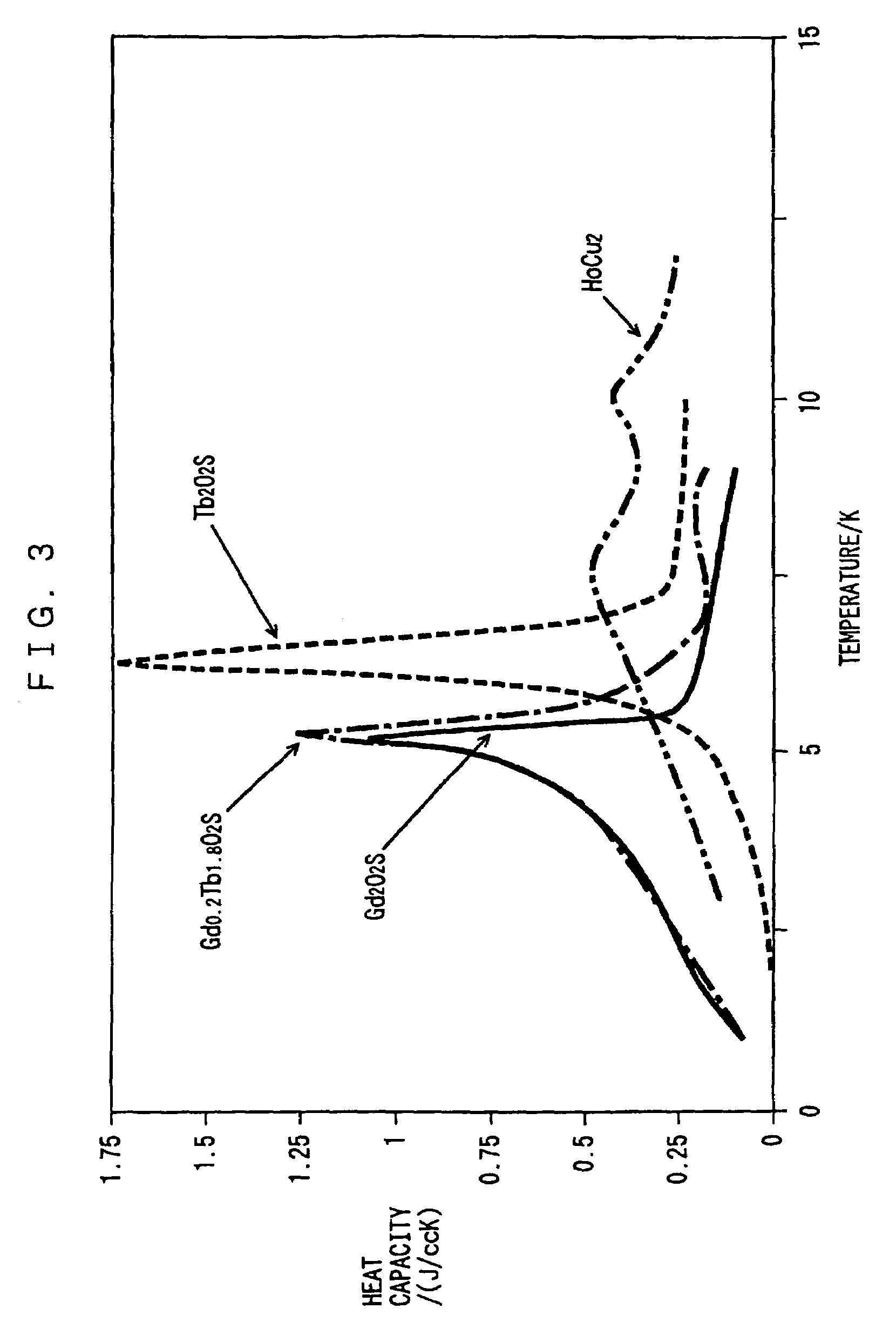Rare earth metal oxysulfide regenerative material and regenerator
a technology of regenerative material and rare earth metal oxysulfide, which is applied in the direction of magnetic bodies, other chemical processes, lighting and heating apparatus, etc., can solve the problem of difficult use of large-sized refrigerators for small-sized facilities using superconductive materials, and achieve the effect of high durability and large heat capacity
- Summary
- Abstract
- Description
- Claims
- Application Information
AI Technical Summary
Benefits of technology
Problems solved by technology
Method used
Image
Examples
example 1
[0081]A rare earth metal oxysulfide was prepared by the same manner as embodiment 1 (the programming rate for temperature up was 200° C. / h). This sample was designated as example 1.
embodiment 11
Addition of Zirconia
[0082]The gadolinium oxide used in example 1 and partially stabilized zirconia (3Y—ZrO2, 3 mol % Y2O3—97 mol % ZrO2; the same was used in the following) were put in a ball mill and mixed for 24 hours with ethanol as a solvent. The resulted slurry was dried and calcined (900° C.×3 hours). The product was made to react with hydrogen sulfide gas to prepare Gd2O2S ceramics containing Zr (Zr-doped Gd2O2S) in the same manner as example 1 (hydrostatic pressing at 200 MPa, then atmospheric sintering in argon atmosphere at 1500° C. for 6 hours). The density of the resulting Zr-doped Gd2O2S was determined to be 99.9% of the theoretical density by Archimedes' method, and the mean grain size was 1.1–1.5 μm. Table 11 shows the heat capacity at the magnetic phase transition temperature (the temperature of the highest peak of the heat capacity) corresponding to the amount of addition of ZrO2, and the heat capacity at 4.2K. As can be seen in Table 11, with the addition of ZrO2, ...
embodiment 12
Addition of Alumina
[0085]Gd2O2S ceramics containing Al2O3 (Al-doped Gd2O2S) were prepared with Al2O3 instead of partially stabilized zirconia (3Y—ZrO2). The other conditions were similar to those of embodiment 11. The density of the resulting Al-doped Gd2O2S was determined to be 99.9% of the theoretical density by Archimedes' method, and the mean grain size was 1.1–1.5 μm. Table 12 shows the heat capacity at the magnetic phase transition temperature (the temperature of the highest peak of heat capacity) corresponding to the amount of addition of Al2O3, and the heat capacity at 4.2K. As can be seen in Table 12, with the addition of Al2O3, the heat capacity at the magnetic phase transition temperature decreases, but when the addition is 30 wt % or under, the heat capacity at 4.2K is 0.3 J / cc·K or over.
[0086]
TABLE 12Addition of Al2O3Heat capacity at the magneticAmount ofphase transition temp. / Heat capacity at 4.2 K / Sampleadditive / wt %J / cc · KJ / cc · KExample 1Non-dope1.20.50Embodiment 1...
PUM
| Property | Measurement | Unit |
|---|---|---|
| atomic numbers | aaaaa | aaaaa |
| atomic numbers | aaaaa | aaaaa |
| temperature | aaaaa | aaaaa |
Abstract
Description
Claims
Application Information
 Login to View More
Login to View More - R&D
- Intellectual Property
- Life Sciences
- Materials
- Tech Scout
- Unparalleled Data Quality
- Higher Quality Content
- 60% Fewer Hallucinations
Browse by: Latest US Patents, China's latest patents, Technical Efficacy Thesaurus, Application Domain, Technology Topic, Popular Technical Reports.
© 2025 PatSnap. All rights reserved.Legal|Privacy policy|Modern Slavery Act Transparency Statement|Sitemap|About US| Contact US: help@patsnap.com



